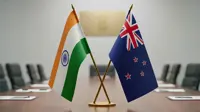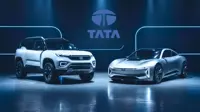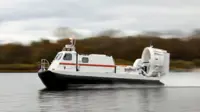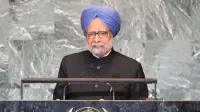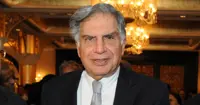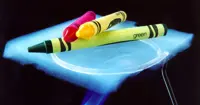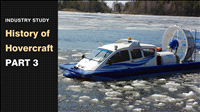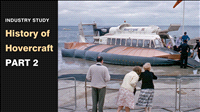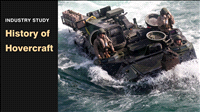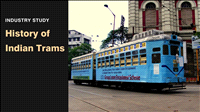The Asian space odyssey
By Sriharikota: | 22 Oct 2003
Reiterating ISRO's stand on peaceful application of space technologies Dr P S Goel, member, Space Commission, and director, ISRO Satellite Centre, says: "Our focus is on the final application of the technology."
It was Lieutenant Colonel Lang Yiwei who piloted the Chinese spacecraft Shenzhou 5 and completed the space mission successfully. Yiwei's 14 orbits around the earth is estimated to have cost China around $2.3 billion. With this mission China became the first Asian nation and the third in the world to send a human in its own spacecraft.
China, the inventor of black powder rocket, became the first nation after four decades to send its citizen in space in its own vehicle. Prior to the manned mission, China sent four unmanned Sehnzhous to perfect its technology. Following the Columbia space shuttle tragedy, the US is forced to go slow on manned space flights.
There are conflicting views about the Chinese achievement. A single swallow does not make a summer, and one manned space flight will not change the Chinese position in the global commercial space launch industry. Today the US, Russia and Europe equally share the entire global satellite launch pie.
On the other hand, the US-based Futron Corporation, in its latest report, says sending a human to the space is still considered to be the pinnacle of scientific and technological achievement. The Shenzhou 5 mission is expected to translate into higher international investment into China apart from gaining respect from its peers across the globe and stoking domestic pride and inspiration.
China was always ahead of India in space technology. The Chinese launched its first satellite in 1970 with its own launch vehicle, Long March 1, modifying its intercontinental ballistic missile. Even in the seventies, the country was planning a human space mission under the project called Shuguang-1.
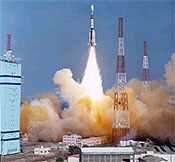 In
1974, China started its remote sensing satellite programme
and launched Fanhui Shei Weixing-1 (FSW-1) a satellite
that used a re-entry film capsule. Later, the country
decided to focus on the launch industry and developed
12 launch vehicle variants and also built three launch
sites for different orbits.
In
1974, China started its remote sensing satellite programme
and launched Fanhui Shei Weixing-1 (FSW-1) a satellite
that used a re-entry film capsule. Later, the country
decided to focus on the launch industry and developed
12 launch vehicle variants and also built three launch
sites for different orbits.
In 1981 it launched multiple satellites using a single rocket. Between 1985 and 2000 the country conducted 18 commercial launches at a cost that is significantly lower than the US and Russia. In 1984 Ronald Reagan, the then US president, offered to fly a Chinese astronaut in Space Shuttle. However, the Chinese didn't show interest in that offer.
According to Futron, in 1992 China decided to pursue the human space flight seriously and the three-phased project was coded as Project 921. The first phase being human space mission, second a space station and third being fielding of reusable launch vehicle.
The country got Russian assistance in good measure. In fact Shenzhou is similar to the time-tested Russian spacecraft Soyuz. Two Chinese astronauts were trained in Russia who in turn trained others in China. In 1999 the first unmanned Shenzhou was carried by Long March 2F. This was followed by three more missions — in January 2001, March 2002 and December 2002.
China is also in the process of developing a new launch vehicle — Long March 5 — and a small vehicle called Kaitouzhe. Apart from its own manned space station, China nurtures an ambition of having its own lunar base.
For
India it is the moon
 On
the other hand India's first satellite launch vehicle
(SLV-3), similar to the American Scout rocket, was launched
in 1979. It was followed by the advanced satellite launch
vehicle (ASLV) in 1987. In 1993 the present workhorse
Polar Satellite Launch Vehicle (PSLV) came in and was
followed by Geo Stationary Launch Vehicle (GSLV) in
2001. India was on and off the US technology embargo
list.
On
the other hand India's first satellite launch vehicle
(SLV-3), similar to the American Scout rocket, was launched
in 1979. It was followed by the advanced satellite launch
vehicle (ASLV) in 1987. In 1993 the present workhorse
Polar Satellite Launch Vehicle (PSLV) came in and was
followed by Geo Stationary Launch Vehicle (GSLV) in
2001. India was on and off the US technology embargo
list.
India has started carrying third-party satellites for a fee and is slowly making its presence felt in the global launch market. It was in 1984 that Rakesh Sharma, then a Squadron Leader in the Indian Air Force, got a lift in the Russian Soyuz T-11.
According to Nair, ISRO is perfecting its instrumentation and is focusing on its Rs 380-crore unmanned mission to moon, Chandrayaan-1. "Our target is to complete the moon mission in five years' time," says Nair. Like the human space mission, a successful lunar mission is also cited as a proof of technological prowess.
"The latest Chinese mission has not put any pressure on us," says Dr Goel. According to him ISRO is clear on its plans and its programmes are not dependent on what others do.
Perhaps the first step towards the human space mission for ISRO is the development of reusable capsule. According to Dr B N Suresh, director, Vikram Sarabhai Space Centre (VSSC), the capsule will be sent up in PSLV-C7 sometime in 2005. The capsule was to carry out some micro-gravity experiment in the orbit, which will have applications in natural science and pharmaceuticals.
Is there any chance of ISRO putting a living being, say a dog, inside the capsule? Says R V Perumal, associate projects director, VSSC: "Putting any kind of life form in a spacecraft involves intricate technology and this will take some more years."
 Speaking
about the trends in the satellite industry Dr Goel says:
"Big satellites are now passé. Medium-sized
satellites are more in demand."
Speaking
about the trends in the satellite industry Dr Goel says:
"Big satellites are now passé. Medium-sized
satellites are more in demand."
Futron, in one of its report, said the trend now is in favour of Ku-band transponders over C-band owing to the growth in data and video applications. According to the US company, there is a moderation in the satellite size. In 2000-01 the average transponders in a geosynchronous orbit satellite was 39.4 and it went up to just 40.5 in 2002-03. Earlier the average increase was around two transponders.
Goel
expects the total number of satellite launches (commercial
and non-commercial put together) to go up this fiscal.
"The main contributor for this increase will be
the US defence. On the other hand the launch cost has
come down by 40 per cent in the last few years, mainly
due to the Russians."


